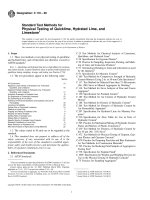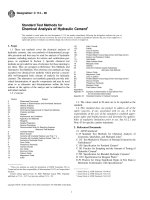Designation: C 349 – 97 - Compressive Strength of Hydraulic-Cement Mortars ppt
Bạn đang xem bản rút gọn của tài liệu. Xem và tải ngay bản đầy đủ của tài liệu tại đây (53.92 KB, 4 trang )
Designation: C 349 – 97
Standard Test Method for
Compressive Strength of Hydraulic-Cement Mortars
(Using Portions of Prisms Broken in Flexure)
1
This standard is issued under the fixed designation C 349; the number immediately following the designation indicates the year of
original adoption or, in the case of revision, the year of last revision. A number in parentheses indicates the year of last reapproval. A
superscript epsilon (e) indicates an editorial change since the last revision or reapproval.
1. Scope
1.1 This test method covers the determination of the com-
pressive strength of hydraulic-cement mortars, using for the
test specimens portions of prisms made and broken in flexure
in accordance with Test Method C 348.
1.2 The values stated in SI units are to be regarded as the
standard. The values in parentheses are for information only.
1.3 Values in SI units shall be obtained by measurement in
SI units or by appropriate conversion, using the Rules for
Conversion and rounding given in Standard IEEE/ASTM SI
10, of measurements made in other units.
1.4 This standard does not purport to address all of the
safety concerns, if any, associated with its use. It is the
responsibility of the user of this standard to establish appro-
priate safety and health practices and determine the applica-
bility of regulatory limitations prior to use.
2. Referenced Documents
2.1 ASTM Standards:
C 109/C109M Test Method for Compressive Strength of
Hydraulic Cement Mortars (Using 2-in. or 50-mm Cube
Specimens)
2
C 348 Test Method for Flexural Strength of Hydraulic
Cement Mortars
2
C 670 Practice for Preparing Precision and Bias Statements
for Test Methods for Construction Materials
3
IEEE/ASTM SI 10 Standard for Use of the International
System of Units (SI): The Modern Metric System
4
3. Significance and Use
3.1 This method provides a means of obtaining compressive
strength values from the same specimens previously used for
flexural strength determinations by Test Method C 348. The
compressive strength values are for reference purposes, and not
as substitutes for values (using 50-mm (2-in.) cubes) obtained
by Test Method C 109/C 109M for cement acceptance.
2
4. Apparatus
4.1 Bearing Plates—The bearing plates shall be not less
than 25 mm in thickness and shall be made of a hard metal. The
surfaces of the bearing plates that are placed in contact with the
specimens shall be 40.0 6 0.1-mm by 50.8-mm rectangles,
with the 50.8-mm dimension at right angles to the longitudinal
axis of the prism. The bearing plate surfaces in contact with the
specimen shall have a Rockwell hardness of not less than 60
HRC. These surfaces shall not depart from plane surfaces by
more than 0.01 mm when the plates are new and shall be
maintained within a permissible variation of 0.03 mm.
4.2 Device for Aligning Bearing Plates—A device for
aligning the bearing plates to ensure the proper location of the
upper plate with reference to the lower plate is shown in Fig.
1. If the upper bearing plate does not have free movement
within the aligning plates, these shall be separated from the
bottom plate by insertion of 0.05-mm shims on each side of the
bottom bearing plate, and the two 6-mm pins in the upper
bearing plate filed down just sufficiently to permit free up and
down movement in the slots at the top of the aligning plates.
4.3 Testing Machine—The testing machine shall conform to
the requirements prescribed in Test Method C 109, except that
the testing machine shall be of the hydraulic type.
5. Test Specimens
5.1 Both portions from each prism broken in flexure shall be
used for compression testing, except that the broken portions of
prisms selected for the compression test shall have a length of
not less than 65 mm and shall be free of cracks, chipped
surfaces, or other obvious defects.
6. Procedure
6.1 Determination of Compressive Strength—During the
interval between flexure tests of the prisms and testing the
broken portions as modified cubes, cover the specimens for the
24-h test with waterproof plastic and completely immerse all
other specimens in water at a temperature of 23 6 2.0°C (73 6
3°F) until the time of testing. Wipe the specimen to a
surface-dry condition, and remove any sand grains or incrus-
tations from the faces that will be in contact with the bearing
plates of the testing apparatus. Check these faces by applica-
tion of a straightedge. If there is appreciable curvature, grind
the face or faces to plane surfaces or discard the specimen
1
This test method is under the jurisdiction of ASTM Committee C-1 on Cement
and is the direct responsibility of Subcommittee C01.27 on Strength.
Current edition approved May 10, 1997. Published June 1998. Originally
published as C 349 – 54 T. Last previous edition C 349 – 95.
2
Annual Book of ASTM Standards, Vol 04.01.
3
Annual Book of ASTM Standards, Vol 04.02.
4
Annual Book of ASTM Standards, Vol 14.02.
1
Copyright © ASTM, 100 Barr Harbor Drive, West Conshohocken, PA 19428-2959, United States.
SI Equivalents
in.
1
⁄
32
1
⁄
4
5
⁄
16
3
⁄
8
0.462
1
⁄
2
9
⁄
16
5
⁄
8
3
⁄
4
7
⁄
8
11
1
⁄
16
1
3
⁄
4
22
1
⁄
16
2
1
⁄
2
3
mm 0.8 6.4 7.9 9.5 11.7 13 14.3 16 19 22.2 25 27 44.5 51 52.4 64 76
FIG. 1 Bearing Plates and Bearing Plate Aligning Device for Testing 40 by 40 by 160-mm Mortar Prisms as Modified Cubes
C 349
2
(Note 1). Center the pedestal usually provided for breaking 50
by 100-mm (2 by 4-in.) cylinders on the base bearing block of
the machine, and center the bearing plate assembly on top of
this pedestal. If the testing machine has no provisions for
automatic accurate centering of a pedestal exactly below the
center of its upper spherical bearing head, a hardened steel
cylinder of suitable diameter and height and with parallel plane
end faces may be used, provided that the bearing plate
assembly is centered accurately below the center of the upper
bearing head after the specimen has been placed in proper
position in the bearing plate assembly. Apply the specimen
aligning guide to the outside of one of the aligning plates of the
bearing plate assembly, with the lugs at each end resting on or
slightly above the edge of the bearing face of the bottom plate.
Turn the specimen on its side with respect to its position as
molded and place it in the device with the bottom as molded in
contact with the aligning lugs, holding the aligning guide
against the aligning plate firmly with one hand. Then remove
the aligning guide without disturbing the position of the
specimen and apply the load in accordance with the Procedure
section of Test Method C 109/C 109M. The testing of the
broken portions as modified cubes shall follow breaking in
flexure within 10 min for 24-h specimens and within 30 min for
all other specimens.
NOTE 1—Modified Cube Faces—Results much lower than the true
strength will be obtained by loading faces of the modified cube that are not
truly plane surfaces. It is essential, therefore, that molds be kept
scrupulously clean, as otherwise large irregularities in the surfaces will
occur. Instruments for cleaning molds should always be softer than the
metal in the molds to prevent wear. In case grinding of modified cube
faces is necessary, it can be accomplished best by rubbing the specimen on
a sheet of fine emery paper or cloth glued to a plane surface, using only
moderate pressure. Since such grinding is tedious for more than a few
thousandths of an inch or hundredth of a millimetre, it is recommended
that where more than this is found necessary, the specimen be discarded.
7. Calculation
7.1 Record the total maximum load indicated by the testing
machine and calculate the compressive strength in megapascals
to the nearest 0.1 MPa, as follows:
S
c
5 0.00062 P (1)
where:
S
c
5 compressive strength, MPa, and
P 5 total maximum load, N.
8. Faulty Specimens and Retests
8.1 Specimens that are manifestly faulty or that result in
strengths differing by more than 10 % from the average value
of all test specimens made from the same sample and tested at
the same period shall not be considered in determining the
compressive strength. After discarding strength values, if less
than two strength values are left for determining the compres-
sive strength at any given period a retest shall be made.
NOTE 2—Reliable strength results depend upon careful observance of
all of the specified requirements and procedures. Erratic results at a given
test period indicate that some of the requirements and procedures have not
been carefully observed; for example, those covering the testing of the
modified cubes, as prescribed in Sections 5 and 6. Specimens exhibiting
oblique fractures on breaking, due to improper centering in the compres-
sion machine or to lateral movement of one of the testing machine heads
during loading, will often indicate lower strengths than specimens
showing a normal pyramidal fracture.
9. Precision and Bias
9.1 Precision—The following precision statements are ap-
plicable when a test result is the average of compressive
strength tests of six modified cubes (using portions of prisms
broken in flexure) molded from a single batch of mortar and
tested at the same age. They are applicable to mortars made
with Type I, IA, IS, or III cement tested at 3, 7, or 28 days (1,
3, or 7 days for Type III cement).
9.1.1 Multilaboratory Precision—The multilaboratory coef-
ficient of variation has been found to be 6.3 %. Therefore,
results of properly conducted tests of single batches by two
different laboratories should not differ by more than 17.8 % of
their average (Note 3).
NOTE 3—These numbers represent, respectively, the (1s%) and (d2s%)
limits as described in Practice C 670.
9.1.2 Single-Laboratory Precision—The single-laboratory
coefficient of variation has been found to be 3.5 %. Therefore,
results of two properly conducted tests of single batches of
mortar made with the same materials either on the same day or
within the same week should not differ from each other by
more than 9.9 % of their average (Note 3).
9.2 Bias—The procedure in this test method has no bias
because the value of compressive strength is defined in terms
of the test method.
10. Keywords
10.1 compressive strength; hydraulic-cement mortar;
hydraulic-cement strength; mortar strength; strength
For additional useful information on details of cement test methods, reference may be made to the “Manual of Cement Testing,” which
appears in the Annual Book of ASTM Standards Vol 04.01.
The American Society for Testing and Materials takes no position respecting the validity of any patent rights asserted in connection
with any item mentioned in this standard. Users of this standard are expressly advised that determination of the validity of any such
patent rights, and the risk of infringement of such rights, are entirely their own responsibility.
This standard is subject to revision at any time by the responsible technical committee and must be reviewed every five years and
if not revised, either reapproved or withdrawn. Your comments are invited either for revision of this standard or for additional standards
and should be addressed to ASTM Headquarters. Your comments will receive careful consideration at a meeting of the responsible
technical committee, which you may attend. If you feel that your comments have not received a fair hearing you should make your
views known to the ASTM Committee on Standards, 100 Barr Harbor Drive, West Conshohocken, PA 19428.
C 349
3
This standard is copyrighted by ASTM, 100 Barr Harbor Drive, West Conshohocken, PA 19428-2959, United States. Individual
reprints (single or multiple copies) of this standard may be obtained by contacting ASTM at the above address or at 610-832-9585
(phone), 610-832-9555 (fax), or (e-mail); or through the ASTM website ().
C 349
4
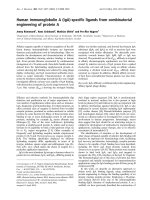
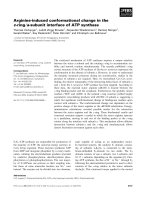
![Standard Test Method for Compressive Strength of Hydraulic Cement Mortars (Using 2-in. or [50-mm] Cube Specimens)](https://media.store123doc.com/images/document/14/rc/yi/medium_yil1395845738.jpg)

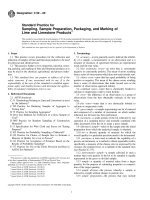
![Designation: C 109/C 109M – 99 - Compressive Strength of Hydraulic Cement Mortars (Using 2-in. or [50-mm] Cube Specimens)1 pps](https://media.store123doc.com/images/document/2014_07/10/medium_tyk1405009245.jpg)
